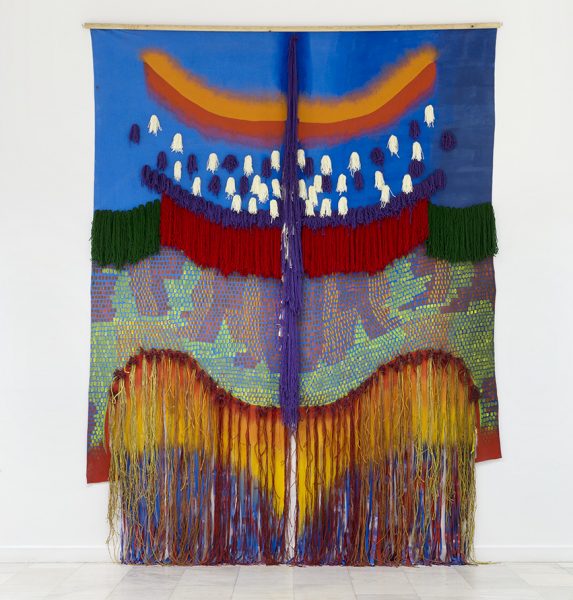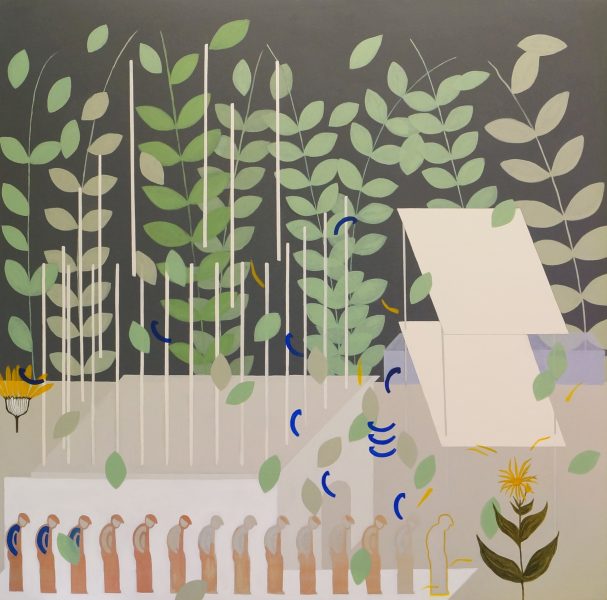With the exhibition “Liminality”, CITRONNE Gallery introduces another current problematic. It addresses challenges arising from a contemporary liquid reality that subverts traditional ways of being, identity and life – whether voluntarily or involuntarily. The transitional stage of moving from one state to another at both an individual and collective level is described, along with the associated “rituals.”. The artists Yorgos Yatromanolakis, Marina Papadaki, Natalia Papadopoulou and Maro Fasouli engage with the concept of liminality.
Liminality is a term introduced by the French ethnographer Arnold van Gennep* in his book The Rites of Passage in 1909*. It represents the middle stage of the three-part pattern “separation, transition, incorporation in rituals.” The exhibition repositions this concept in the context of contemporary experiences, a result of global developments. The curator of the exhibition Vicky Tsirou** broadens the term’s meaning and examines its contemporary expressions. As she points out in her curatorial text, “more recent interpretations encompass not only the notion of ritual but also changes in the social and political sphere. Today, in the era of ‘liquid modernity,’ we observe that the status quo, an entire value system, is in a state of continuous instability characterized by successive transitions, or in other words, by a permanent condition of liminality.”
The works in the exhibition trace ‘Liminality’ through four invisible passages: architectural structure, the course of history, the integration of tradition, and the inner experiential processes. The exhibition does not strictly align each artist’s work with a thematic axis but tends to place them on one of these four axes. The works are integrated into the gallery’s architectural structure, positioned in different rooms to reflect the analogy made by van Gennep of society with a house and its different rooms. Passages in the lives of individuals and social groups resemble movement between the internal spaces of a residence.
The paintings of Marina Papapadaki depict hybrid anthropomorphic and zoomorphic beings with flat colors and in spaces that intertwine the imaginary with the real, the interior with the exterior. The artist creates geometric structures resembling enigmatic systems for organizing reality. Some of her works’ titles, such as Great Horse Manure Crisis of 1894, refer to real historical and social events that the artist transcribes through patterns and illusory spaces. The concept of transition mainly signifies the incisions occurring through social reconfigurations.
The wall-mounted works and totemic sculptures by Maro Fasouli reframe folk tradition and the art of weaving using textures and various materials such as reeds and threads. Her compositions present weaving as detached from a given set of strict rules inherent in this folk art. The passage from convention and the reproduction of standardized patterns to the possibility of “error”, freedom and spontaneity opens the way for new ways of learning and promotes creative imagination. It also emphasizes women’s identity, labor and their relationship with embodied experience and nature.
The in-situ video installation Horses, Horses (2024) by Natalia Papadopoulou transforms the gallery’s long passage into an immersive audiovisual tunnel with soundscapes, speech, and intense visual images resembling traces or impressions. Logical sequence, empirical space, and time are abolished as the images intertwine or follow a non-linear, associative narration with alternating rhythms. Both the installation and her other two works in the exhibition reveal the poetic self, the inner, unconscious, or subconscious thoughts, and hidden aspects of the psyche that emerge in the condition of liminality.
The photographs by Yorgos Yatromanolakis from the sequence The Splitting of the Chrysalis & the Slow Unfolding of the Wings (2018) derive from on a personal, experiential passage from a previous to a new relationship with memories and the past. The process begins with the stage of separation, enters the stage of liminality and concludes with incorporation. The work parallels this experience with the biological cycle in nature and specifically the flight of the chrysalis. It suggests, by extension, the correlation that van Gennep makes between the periodicity of human transitions and of natural phenomena. Transitions organize time, and correspondingly, biological time defines transitions.
As a whole, the works constitute a multifaceted array of expressive means, qualities, textures, and sensations.
*Liminality refers to transitions from one life stage to another and from one social position to reintegration with a different role and new forms of relationships. It is an intermediate state in which boundaries between the conscious and the unconscious, the personal and the collective, space and time, become blurred. Often, the experience is embodied.
**Vicky Tsirou is an independent curator, art historian and art theorist.
***All artists – Maro Fasouli, Marina Papadaki, Natalia Papadopoulou, Yorgos Yatromanolakis- are SNF ARTWORKS Fellows
CITRONNE Gallery – ATHENS
Liminality
Maro Fasouli I Marina Papadaki
Natalia Papadopoulou I Yorgos Yatromanolakis
Curator: Vicky Tsirou
Opening: Thursday, 18 January, 19.00 – 22.00
Duration: 19 January – 2 March 2024
CITRONNE Gallery – Athens:
19 Patriarchou Ioakim 19 (4th floor)
10675 Kolonaki, Athens.
Tel. (+30) 210 7235 226
Email: [email protected]
Tue, Thu, Fri: 11.00-20.00
Wed, Sat: 11.00-16.00





